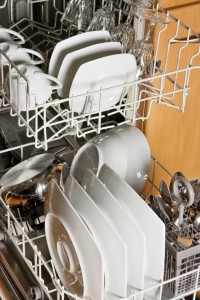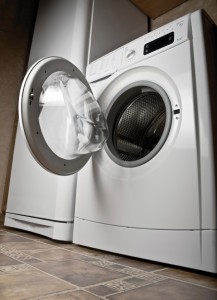Maintenance Matters: Tips for Cleaning the Machines that Keep Us Clean

 As contrary as it sounds, the machines that help keep us clean need to take a bath from time to time, too. A simple monthly cleaning routine, using basic ingredients you already have on hand, is all it takes. Don’t let vinegar’s off-putting odor put you off; it’s an inexpensive and terrific household cleaner. Its distinctive scent quickly dissipates, leaving things fresh and squeaky clean, especially when coupled with baking soda. Bleach, a household staple from your laundry room, can be used to sanitize multiple surfaces in your home when diluted to the same ratio that hospitals use: 10 parts water to 1 part bleach. Products like table salt and baking soda can come out of the spice cabinet and play a role as gentle and effective scrub-busters in all the rooms of your house.
As contrary as it sounds, the machines that help keep us clean need to take a bath from time to time, too. A simple monthly cleaning routine, using basic ingredients you already have on hand, is all it takes. Don’t let vinegar’s off-putting odor put you off; it’s an inexpensive and terrific household cleaner. Its distinctive scent quickly dissipates, leaving things fresh and squeaky clean, especially when coupled with baking soda. Bleach, a household staple from your laundry room, can be used to sanitize multiple surfaces in your home when diluted to the same ratio that hospitals use: 10 parts water to 1 part bleach. Products like table salt and baking soda can come out of the spice cabinet and play a role as gentle and effective scrub-busters in all the rooms of your house.
Dishwashers
Once a month, remove the utensil holders and racks, check for stuck-on food, and wipe down the interior of the dishwasher. Though you should check your owner’s manual before you try any home cleaning remedies, consider this method to clean your dishwasher: Add 3 cups of plain white vinegar and 1 cup of baking soda to the bottom of the empty machine. Turn on the dishwasher; allow it to run for a few minutes. Stop the cycle mid-wash, leaving the vinegar solution to stand for 20 minutes or so, then allow the machine to finish up its cycle. The combination of hot water and the vinegar solution will loosen any goo and allow you to easily wipe it away. Pay special attention to the door and its rubber gasket. Finally, don’t forget to refill the compartment for your machine’s liquid drying agent. Products like “Finish” and “Jet Dry” really do help your dishes and the interior of your machine to dry faster, cutting down on soap residue and ultimately helping your machine run efficiently.
 Jetted Tubs
Jetted Tubs
A nice bubble bath, perhaps with some scented essential oils or an exfoliating salt scrub, is such a nice way to relax and tend to your personal well-being. But properly cleaning up after your at-home spa treatment is essential to the health of your Jacuzzi tub, considering that your bath water, bubbles and exfoliated skin have been recirculating through the pipes and creating an icky brew. After your bath, fill the tub with enough hot water to cover the jets by an inch or two, and add a squirt of your favorite grease-busting dish soap plus 1 cup of bleach to cleanse and sanitize the slippery surface. Turn on the jets for about 15 minutes, drain the tub, and wipe the residue away with a microfiber cloth. Then fill the tub again with cool water and turn on the jets to rinse your tub clean. If you are worried about using bleach in your jetted tub, you may prefer to swap the bleach for 3 cups of white distilled vinegar and 1 cup of salt or baking soda instead. Either way, your jetted bathtub will be degreased, degunked, and ready for your next spa day.
 Washing Machines
Washing Machines
Whether you have a front-loading or top-loading washer, an ounce of prevention is worth having to rewash a pound or so of stinky laundry. When not in use, leave the soap dispenser compartment ajar as well as the door or lid on the drum to allow residual water to evaporate. If you have a front-loader, use only “he” (high-efficiency) detergent, and no matter what style of machine you own, use only about half as much detergent as the container suggests you need. More is not better when it comes to laundry soap and liquid fabric softener. Over-sudsing creates a scummy sludge in your clothing and in your machine. Once a month, run an empty cycle on the hottest water setting with 3 cups of distilled white vinegar and 1 cup of baking soda, or use a packet of store-bought washing machine cleaning powder. Once the cycle is complete, wipe down the interior of your machine, including the door/lid and around the rubber seal. If you notice that your machine has a mold or mildew smell, you must focus on sanitizing and killing bacteria. Instead of a vinegar-and-baking soda solution, add one cup of bleach to the drum of your washer and run a complete cycle on the hottest setting. Go ahead and take the opportunity to toss in your household cleaning cloths and sponges so they can be sanitized, too. When the cycle is through, scrub the interior of your machine with a nubby cloth to remove any remaining sludge and leave the door open to permit everything to air-dry.
Our grandmothers didn’t have the big modern-day equipment that we have the luxury of using today, but they certainly knew a thing or two about economical and effective cleaning solutions for the home.






